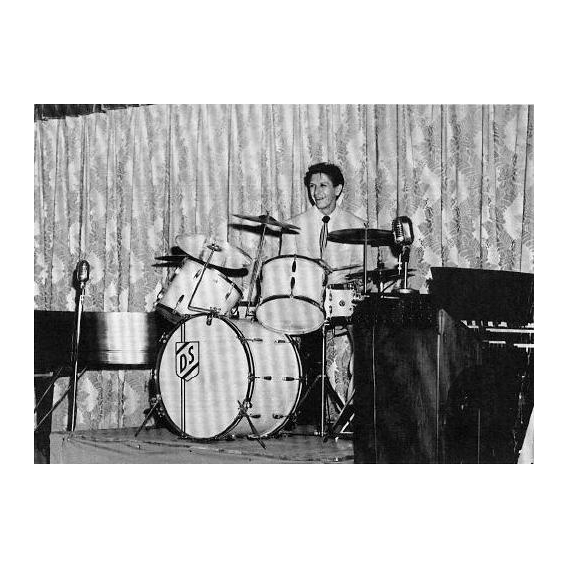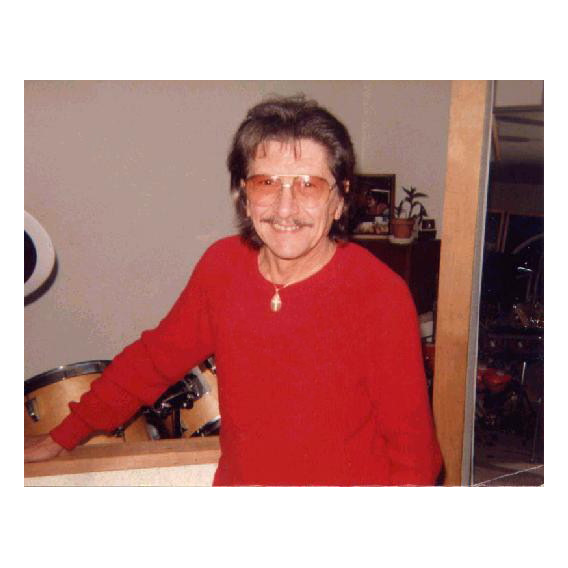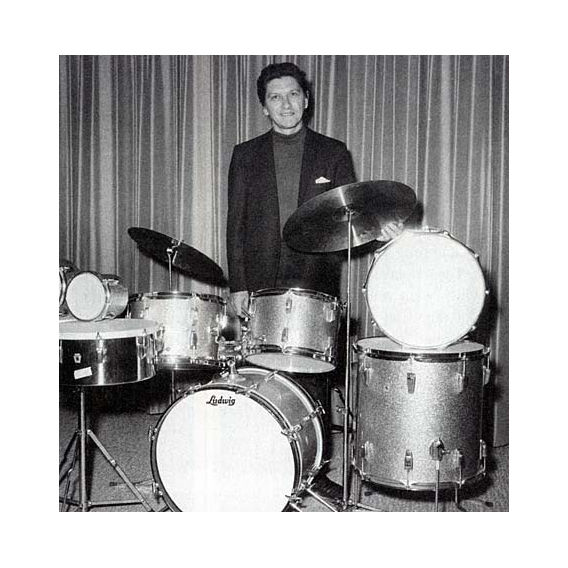Gurciullo Cesario
Cesario Gurciullo (ricerche di Marisa Pappalardo)

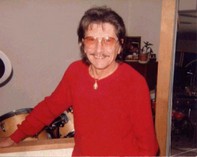
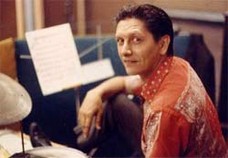
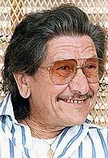
TRATTO DA:
http://www.angelfire.com/music5/garychester/bio.html
Gary Chester (nato Cesario Gurciullo) è nato in una povera famiglia italiana il 27 ottobre 1924. I suoi genitori salutato da Saracusa, Italia, e Gary era il più giovane di tre fratelli, che comprendeva due sorelle e un fratello. Mentre cresceva in Harlem, New York, se ne stava fuori i club locali e ascoltare il jazz bands play. Avrebbe sbattere costantemente in barattoli e scatole nel retro del suo negozio di barbiere padri, imitando i suoni di gruppi come Count Basie, Oscar Peterson, e Chick Webb. Finalmente ha lasciato la scuola nel grado 8 di giocare con una band in tour.
Il suo inizio come musicista in studio è stato il risultato di un buon tempismo. Aveva appena terminato, recante tracce di una demo, e stava lasciando lo studio, quando l'A & R nella stanza accanto lo fermò. Gli disse che Panama Francis, il batterista del brano in fase di registrazione, si era ammalato e non poteva fare la sessione. Ha chiesto Gary di intervenire per lui, e la canzone si è rivelato essere la hit "Every Little Breath You Take" di Gene Pitney. Dopo di che, il telefono non ha mai smesso di suonare, e che stava facendo tre sessioni al giorno, di solito 10:00-01:00, 14:00-17:00, e 19:00-22:00.
Gary è diventato rapidamente la cima East Coast sessione batterista, e insieme al suo omologo della West Coast, Hal Blaine, hanno giocato su una maggioranza dei successi della fine degli anni Cinquanta e l'inizio e la metà degli anni '60. Gary, una volta stimato il numero di sessioni ha giocato per essere oltre 15.000. Solo alcuni dei record di beneficiare di parti di batteria di Gary erano classici di gruppi come gli angeli ("Ritorno del mio ragazzo"), gli Archie ("Sugar, Sugar"), Burt Bacharach ("Promises, Promises"), il Chiffons ("E 'So Fine"), Petula Clark ("Downtown"), Jim Croce ("Time in a Bottle", "Bad Bad Leroy Brown"), Jackie DeShannon ("Quello che il mondo ha bisogno ora"), i Drifters (" Up on the Roof "," Under the Boardwalk "), gli Isley Brothers (" Twist and Shout "), Ben E. King (" Spanish Harlem "," Stand By Me "), Curtis Lee (" Angel Eyes "), Piccola Eva ("Locomotion"), Neil Sedaka ("Calendar Girl", "Lasciarsi è difficile da fare"), il Shirelles ("Will You Still Love Me Tomorrow"), Dionne Warwick ("Walk On By", "Do si conosce il modo di San Jose "," Ti Never Fall in Love Again "," Say a Little Prayer "), e Van Morrison (" Brown Eyed Girl "). Artisti che vanno da The Monkees, The Lovin 'Spoonful, e The Mamas & The Papas, a Frank Sinatra e Tony Bennett, tutti chiamati Gary in tempi diversi.
Come parte del suo impegno per l'arte di suonare la batteria, Gary avrebbe catalogare i pezzi che ha usato su particolari registrazioni. Sempre molto sensibili all'idea di giocare per la canzone, piuttosto che mostrando abilità tecnica personale, avrebbe tirato fuori i suoi file quando pensava qualcosa che ha funzionato in passato, era giusto per un particolare brano musicale. Veniva spesso con le innovazioni per migliorare una canzone, come la rottura di una lastra di vetro per ottenere il suono giusto, o allegando un tamburello per l'hi-hat, che è qualcosa di ancora ampiamente utilizzato dai batteristi di oggi.
Mentre la sua fama crebbe, Gary è diventato un insegnante rispettato, con batteristi ricerca fuori la sua esperienza e le tecniche impegnative. Spesso cadere gli studenti che non sono stati dedicati abbastanza per soddisfare lui, ma quelli che ha incontrato la sua approvazione è diventata confidenti di fiducia e gli studenti. Molti di coloro che hanno studiato con Gary è andato a una carriera di grande successo stessi, tra cui Kenny Aronoff, Danny Gottlieb, Dave Weckl, Tico Torres, e Max Weinberg. Al fine di raggiungere il maggior numero di persone, e diffondere la parola delle sue tecniche innovative, Gary autore del libro che è diventato il punto di riferimento rispetto al quale batteristi misurano la loro tecnica. Lo chiamò "The New Breed", sperando che ispirare una "nuova razza" del batterista che potesse gestire le esigenze del contesto moderno studio. Pubblicato da Modern Drummer Magazine, continua ad essere ampiamente utilizzato dai mondi migliori batteristi.
Gary è morto il 17 agosto 1987. In un giusto tributo, pupillo, Chrissy Adams ha completato il lavoro che aveva iniziato il "The New Breed II", che conteneva le tecniche avanzate per lo sviluppo di totale indipendenza e creatività. L'influenza di Gary Chester continua a vivere, sia come persona che ha stabilito un elevato standard da cui batteristi moderni imparano, e come influenza personale sulla vita dei suoi studenti.
HA SUONATO CON:
ust a few of the records to benefit from Gary's drum parts were classics by groups such as the Angels ("My Boyfriend's Back"), the Archies ("Sugar, Sugar"), Burt Bacharach ("Promises, Promises"), the Chiffons ("He's So Fine"), Petula Clark ("Downtown"), Jim Croce ("Time in a Bottle," "Bad Bad Leroy Brown"), Jackie DeShannon ("What the World Needs Now"), the Drifters ("Up on the Roof," "Under the Boardwalk"), the Isley Brothers ("Twist and Shout"), Ben E. King ("Spanish Harlem," "Stand By Me"), Curtis Lee ("Angel Eyes"), Little Eva ("Locomotion"), Neil Sedaka ("Calendar Girl," "Breaking Up is Hard to Do"), the Shirelles ("Will You Still Love Me Tomorrow"), Dionne Warwick ("Walk On By," "Do You Know the Way to San Jose," "I'll Never Fall in Love Again," "Say a Little Prayer"), and Van Morrison ("Brown Eyed Girl"). Artists ranging from The Monkees, The Lovin' Spoonful, and The Mamas & The Papas, to Frank Sinatra and Tony Bennett, all called upon Gary at various times.
http://en.wikipedia.org/wiki/Gary_Chester
(27 Ottobre 1924 - 17 agosto 1987) (nato Cesario Gurciullo in Siracusa , Italia) è stato uno dei più trafficati del 20 ° secolo in studio batteristi. [ citazione necessaria ] Gary è contato come uno dei grandi quando si tratta di studio di sessione musicisti . [ 1 ] Il suo lavoro appare su migliaia di tracce, tra cui centinaia di dischi di successo degli anni '50, '60 e '70. Ha registrato più di 15.000 sessioni in studio oltre tre decenni. [ 2 ] Egli è il breve elenco di Hall of Fame Drummers 20th Century ". [ 3 ]
Chester ha occupato la stessa posizione di Studio risalto sulla scena di registrazione costa orientale che Hal Blaine fece a ovest, [ 4 ] [ 5 ] e aveva le capacità musicali e lo spirito creativo a rotolare con tutti i cambiamenti nel flusso di musica popolare che è accaduto durante il suo corso della vita. Cominciando con doo-wop e rhythm and blues, registrazioni, Chester ha anche mostrato un grande talento per il rock, folk rock, rockabilly e pop. Nel 1970-1, Chester era il Contraente Musicale per la Broadway produzione musicale di Purlie . [ 6 ] Nel 1964, Gary ha formato un gruppo, Gary Chester e il Beatle beat , che ha pubblicato il suo solo album intitolato "Yeah, Yeah, Yeah!" composto da una dozzina di copertura canzoni dei Beatles '.
Storia
Prima sessione di registrazione di successo di Chester è stato quello di sostituire un batterista in studio. Ha ripetuto il suo successo con artisti canzoni che sono considerati colpi. Diversi studiosi musicali che hanno dedicato la loro vita al lavoro di batteristi in studio hanno sostenuto la ridenominazione del formato stazione radio "oldies" a "Gary Chester radio." [ 2 ]
Come risultato del lavoro e istruzione di Chester, uno studio di batterista professionista può giocare bene in tutti i generi musicali richiesti. In studio, un batterista sarà spesso dato un foglio di musica da leggere con una o due parole che descrivono lo stile. Da queste informazioni di base, un batterista compiuto capirà il solco e sentire della canzone. Alcuni dei più famosi batteristi in studio di oggi sono rinomati per la loro capacità di adattarsi a qualsiasi stile di musica.[ citazione necessaria ]
Mentre la sua fama crebbe, Gary è diventato un insegnante rispettato, con batteristi ricerca fuori la sua esperienza e le tecniche impegnative. I suoi sistemi di tamburi sono stati utilizzati e approvato da batteristi come Kenny Aronoff ,Danny Gottlieb , [ 7 ] Max Weinberg , Chris Adams, Tico Torres , Lindy Morrison e Dave Weckl , ciascuno avendo studiato sotto Gary. [ citazione necessaria ]
Sua figlia Katrina Chester , è una roccia e cantante rotolo.
Tecnica di istruzioni [ modifica ]
Ostinato [ modifica ]
Chester ha ideato un sistema che coinvolge i modelli interiorizzati che impiegano un tamburo ' melodia ', nel tentativo di espandere coordinamento batteristi "e la capacità groove. Il suo uso del ostinato [ 8 ] [ 9 ] figura impiegato più di ripetizione; ha creato melodie di batteria per una canzone con variazione e lo sviluppo del tamburo frase o motivo utilizzando l'intero kit di batteria . Ha sostenuto alternando una linea ostinato per adattarsi cambiando armonie o le chiavi per migliorare la canzone. Sistema di Chester ha anche insegnato come impostare un ostinato con un arto o di più e giocare liberamente con gli arti rimanenti, consentendo una batterista per suonare come una piccola sezione di percussioni. [ 10 ]
Ambidestria e vocalizzazione ritmica [ modifica ]
Chester focalizzato sull'insegnamento abilità come la creatività, l'improvvisazione, l'indipendenza di quattro arti e ambidestro, cross-dominanza , il tempo di gioco solida, l'allineamento degli arti, e di dare un contributo indipendente al brano durante la riproduzione per abbinare la canzone, piuttosto che giocare mettersi in mostra. Ad esempio, le sue tecniche di istruzione inclusi imparare a superare la loro naturale prepotenza (o lateralità ) giocando entrambi destri e mancini. Ciò ha offerto la Pro Studio maggiore flessibilità, più liscia transizione groove, e una più complessa, ininterrotta riff o riempire . Questo ambidestro consentito anche il batterista di passare il ostinato da destra a sinistra o viceversa, lasciando in tal modo la mano libera (o piede) sviluppare una più ricca tamburo melodia. Un ulteriore vantaggio è stato più aperto consegnato drumming che aumenta la mobilità mano intorno al set, come il batterista non ha bisogno di attraversare e disincrociare sue braccia come spesso. [ citazione necessaria ]
Il concetto di base di di Chester New Breed stile di insegnamento era l'indipendenza a cinque vie. Lo studente è stato dato un sistema (tre parti di un ritmo) ed è stato richiesto di suonare una melodia scritta con la grancassa. Chester ha insegnato ai suoi studenti di "cantare" ogni parte che ogni arto giocato (vocalizzazione ritmica), mentre drumming di "allenare l'orecchio ad accettare e capire quello che stai facendo." Mentre il coordinamento e la lettura, lo studente dovrebbe anche essere richiesto di cantare la nota da un quarto, indietro battere, fino battuto e la melodia per ogni sistema. Una volta che lo studente eseguita ogni due pagine melodia scritto e cantato quattro parti diverse, lui / lei era tenuto a svolgere lo stesso esercizio con un vantaggio di mano sinistra. Qui, innumerevoli nuovi ritmi sono state giocate, leggere, coordinata in tempo per un metronomo, mentre canta. [ 11 ] A seguito di tecniche di istruzione di Chester, lo studente dovrebbe: (a) sviluppare coordinazione quattro vie indipendenti, (b) Maestro di vista capacità di lettura e riconoscimento nota (c) della mano sinistra sarebbe ora in grado di riprodurre i modelli di corsa (d) Tempo di controllo mantenendo attraverso metronomo e canto (cantando la nota da un quarto, uno potrebbe sempre giocare nel tempo) (e) Con l'acquisizione della capacità di suonare e cantare le melodie scritte, lo studente una maggiore creatività e la musicalità. Se si potesse giocare a quello che lui / lei cantava, tutte le situazioni di gioco è diventato un gioco da ragazzi. [ 11 ]
Pubblicati in letteratura [ modifica ]
Americano famoso batterista jazz Louis Bellson detto del primo libro di Gary drumming pubblicato da Modern Drummer Publications, New Breed : "Un classico!" "Un originale che utilizza un approccio trovato in nessun altro libro!" "Ha scritto il libro sul drumming!" [ 12 ]
• New Breed
• New Breed II
Riferimenti [ modifica ]
1. Saltate^ "" La guida del Idiot completo a Playing Drums "2 ° edizione [1] ". "Quando si parla dei grandi batteristi in studio, Gary Chester merita un posto vicino alla parte superiore della lista." | accessdate = richiede | url = ( aiuto )
2. ^ Vai a:un b . Chadbourne, Eugene "Gary Chester" . Allmusic.com . Richiamato 2011-10-09 .
3. Saltate^ "20 ° secolo drummersa sala della fama" . Rhythmweb.com . Richiamato 2011-10-09 .
4. Saltate^ "Gary Chester" . Drummerworld . Richiamato 2011-10-09 .
5. Saltate^ Firth, Vic. "" Idiots Guide to Drumming. "p.228" . Amazon.com . Richiamato 2011-10-09 .
6. Saltate^ "Internet Broadway Database: Purlie Credits produzione" . Ibdb.com . Richiamato 2011-10-09 .
7. Saltate^ "Danny Gottlieb: Teaching" . Danny Gottlieb sito . Richiamato 2007-11-19 .
8. Saltate^ "Glossario e dizionario" . Drummer Cafe . Richiamato 2011-10-09 .
9. Saltate^ "L'improvvisazione e il Musicista classico: Groovy, Baby ... (ostinati, parte I)" . Classicalimprov.blogspot.com. 2006-04-20 . Richiamato 2011-10-09 .
10. Saltate^ "Che cosa è un ostinato?" . Ostinato_drumming.tripod.com . Richiamato 2011-10-09 .
11. ^ Vai a:un b RhythmTech School of Drums - Chi
12. Saltate^ "Libri e biblioteche Indice Elenco Dettagli: Modern Drummer 13 febbraio 2008" . Moderndrummer.com . Richiamato 2011-10-09 .
Gary Chester (October 27, 1924 – August 17, 1987) (born Cesario Gurciullo in Siracusa, Italy) was one of the 20th century's busiest studio drummers.[citation needed] Gary is counted as one of the greats when it comes to studio session musicians.[1] His work appears on thousands of tracks, including hundreds of hit records from the '50s, '60s and '70s. He logged over 15,000 studio sessions over three decades.[2] He is on the short list of 20th Century Drummers' Hall of Fame.[3]
Chester occupied the same position of studio prominence on the east coast recording scene that Hal Blaine did on the west,[4][5] and had the musical abilities and creative spirit to roll with all the changes in popular music flow that happened during his lifetime. Beginning with doo-wop and rhythm and blues recordings, Chester also showed a great knack for rock, folk rock, rockabilly, and pop. In 1970-1, Chester was the Musical Contractor for the Broadway musical production of Purlie.[6] In 1964, Gary formed a group, Gary Chester and the Beatle Beat which released its only album entitled "Yeah, Yeah, Yeah!" consisting of a dozen Beatles' cover songs.
Chester's first successful recording session was to replace a studio drummer. He repeated his success with artists on songs that are considered to be hits. Several musical scholars who have devoted their lifetimes to the work of studio drummers have advocated the renaming of the "oldies" radio station format to "Gary Chester radio."[2]
As a result of Chester's work and instruction, a pro studio drummer can play well in any requested musical genres. In the studio, a drummer will often be given a sheet of music to read with one or two words describing the style. From this basic information, an accomplished drummer will understand the groove and feel of the song. Some of today's most famous studio drummers are renowned for their ability to adapt to any style of music.[citation needed]
As his reputation grew, Gary became a respected teacher, with drummers searching out his expertise and demanding techniques. His drumming systems have been used and endorsed by drummers such as Kenny Aronoff, Danny Gottlieb,[7] Max Weinberg, Chris Adams, Tico Torres, Lindy Morrison, and Dave Weckl, each having studied under Gary.[citation needed]
His daughter Katrina Chester, is a rock and roll singer.
Chester devised a system involving internalized patterns employing a drum 'melody' in an attempt to expand drummers' coordination and groove ability. His use of the ostinato[8][9] figure employed more than repetition; he created drum melodies for a song with variation and development of the drum phrase or motif using the entire drum kit. He advocated alternating an ostinato line to fit changing harmonies or keys to enhance the song. Chester's system also taught how to set up an ostinato with one limb or more and playing freely with the remaining limbs, allowing one drummer to sound like a small percussion section.[10]
Ambidexterity and rhythmic vocalization[edit]
Chester focused on teaching skills like creativity, improvisation, four-limb independence and ambidexterity, cross-dominance, playing solid time, alignment of limbs, and making an independent contribution to the song while playing to match the song rather than playing to show off. For example, his instructional techniques included learning to overcome their natural handedness (or laterality) by playing both right-handed and left-handed. This offered the studio pro greater flexibility, smoother groove transition, and a more complex, unbroken riff or fill. This ambidexterity also permitted the drummer to switch the ostinato from right-to-left or vice versa, thereby letting the free hand (or foot) develop a richer drum melody. One additional benefit was more open handed drumming which increases hand mobility around the set as the drummer does not need to cross and uncross his or her arms as often.[citation needed]
The core concept of Chester's New Breed instruction style was five-way independence. The student was given a system (three parts of a rhythm) and was required to play a written melody with the bass drum. Chester also taught his students to "sing" each part that each limb played (rhythmic vocalization) while drumming to "train your ears to accept and understand what you’re doing." While coordinating and reading, the student would also be required to sing the quarter note, back beat, up beat and the melody for each system. Once the student performed each two page written melody and sang four different parts, he/she was required to play the same exercise with a left hand lead. Here, countless new rhythms were played, read, coordinated in time to a metronome, while singing.[11] As a result of Chester's instructional techniques, the student would: (a) Develop independent four-way coordination; (b) Master sight reading ability and note recognition (c) Left hand would now be able to play ride patterns (d) Control time keeping through metronome and singing (by singing the quarter note, one could always play in time) (e) By gaining the ability to play and sing the melodies written, the student enhanced creativity and musicianship. If one could play what he/she sang, all playing situations became a breeze.[11]
Published literature[edit]
Famous American jazz drummer Louis Bellson said of Gary's first drumming book published by Modern Drummer Publications, New Breed: "A classic!" "An original that uses an approach found in no other book!" "He wrote the book on drumming!"[12]
• New Breed
• New Breed II
References[edit]
1. Jump up^ ""The Complete Idiot's Guide to Playing Drums" 2nd edition [1]". "When talking about the great studio drummers, Gary Chester deserves a place near the top of the list." |accessdate= requires |url= (help)
2. ^ Jump up to:a b Chadbourne, Eugene. "Gary Chester". Allmusic.com. Retrieved 2011-10-09.
3. Jump up^ "20th century drummersa hall of fame". Rhythmweb.com. Retrieved 2011-10-09.
4. Jump up^ "Gary Chester". Drummerworld. Retrieved 2011-10-09.
5. Jump up^ Firth, Vic. ""Idiots Guide to Drumming." p.228". Amazon.com. Retrieved 2011-10-09.
6. Jump up^ "Internet Broadway Database: Purlie Production Credits". Ibdb.com. Retrieved 2011-10-09.
7. Jump up^ "Danny Gottlieb: Teaching". Danny Gottlieb website. Retrieved 2007-11-19.
8. Jump up^ "Glossary & Dictionary". Drummer Cafe. Retrieved 2011-10-09.
9. Jump up^ "Improvisation and the Classical Musician: Groovy, Baby . . . (Ostinatos, Part I)". Classicalimprov.blogspot.com. 2006-04-20. Retrieved 2011-10-09.
10. Jump up^ "What is an ostinato?". Ostinato_drumming.tripod.com. Retrieved 2011-10-09.
11. ^ Jump up to:a b RhythmTech School of Drums - About
12. Jump up^ "Books and Library Index List Details: Modern Drummer 13 February 2008". Moderndrummer.com. Retrieved 2011-10-09.

